Your cart is currently empty!
Month: April 2017
-
No Mercy
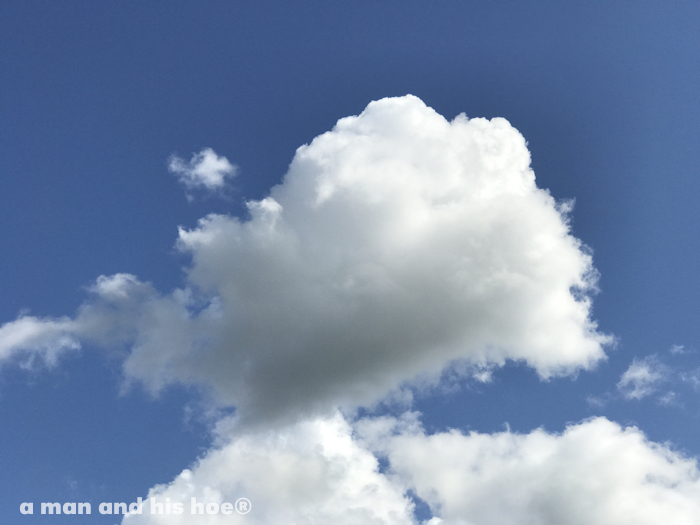
White, puffy clouds against blue skies are such a gift. They make gardening serene, so peaceful, except for the slugs. For them, blue skies are a portend of a time of no mercy, no place to hide. With my trusty weed puller in hand, I stab at deep rooted weeds like buttercup, and pull. Their deep roots rip out of the ground with a satisfying ripping sound. And any slugs I encounter get no mercy. See a slug, kill a slug. Gardening can be so ruthless.
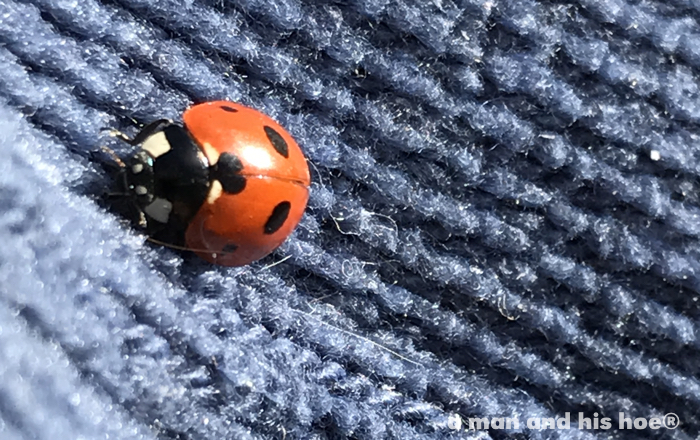
The pretty ladybug crawling up my sleeve shows no mercy either. It thinks nothing of eating prey alive. It will stab a poor, helpless aphid, and suck the life out of it.
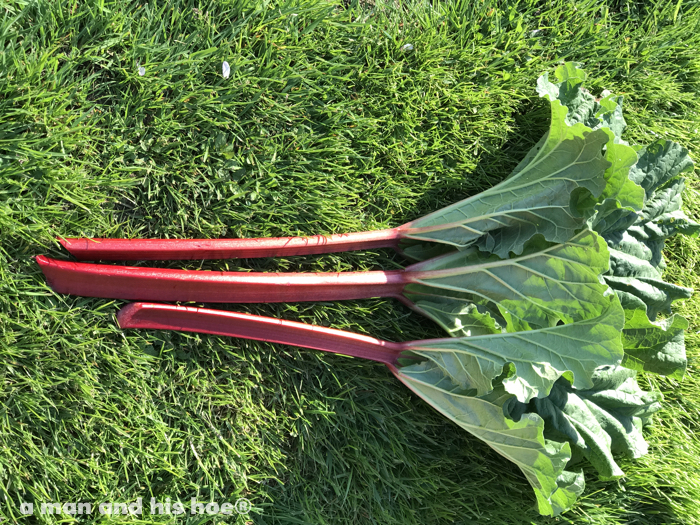
The payoff for showing no mercy, thick, juicy stalks of rhubarb, hellebore blossoms, kale flower buds for supper, blooming rosemary, and velvety tulips.
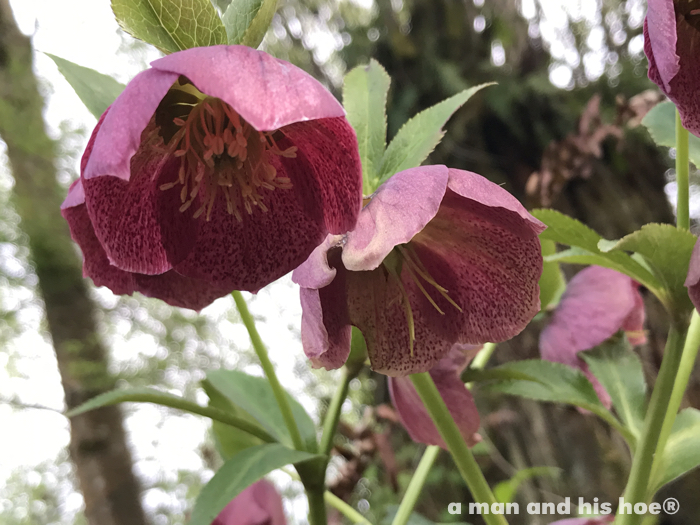
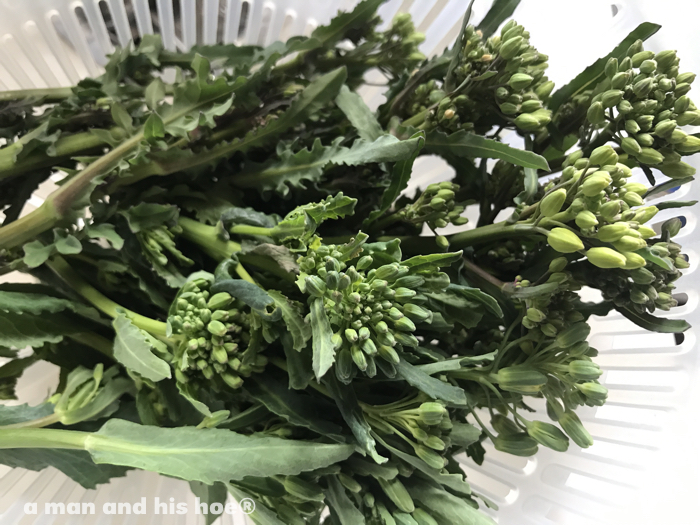
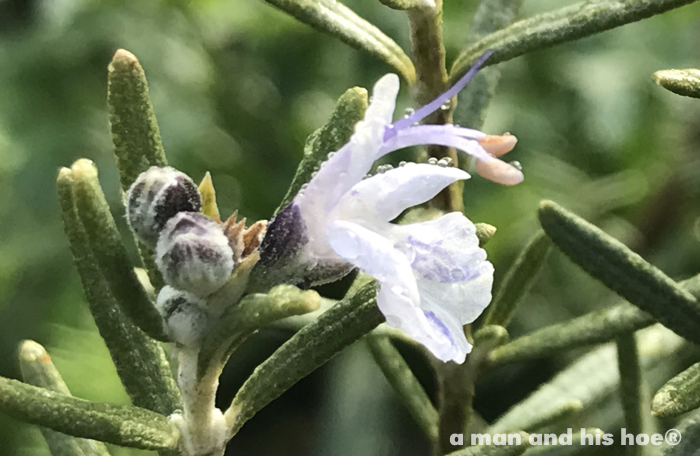
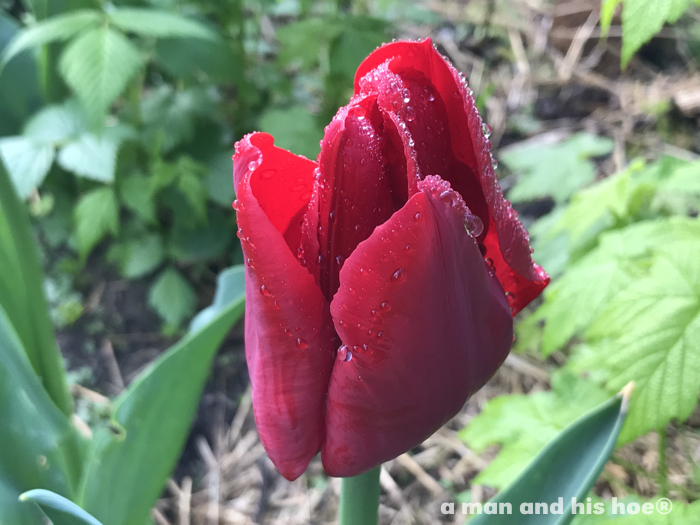
-
He Can’t Blame the Chickens
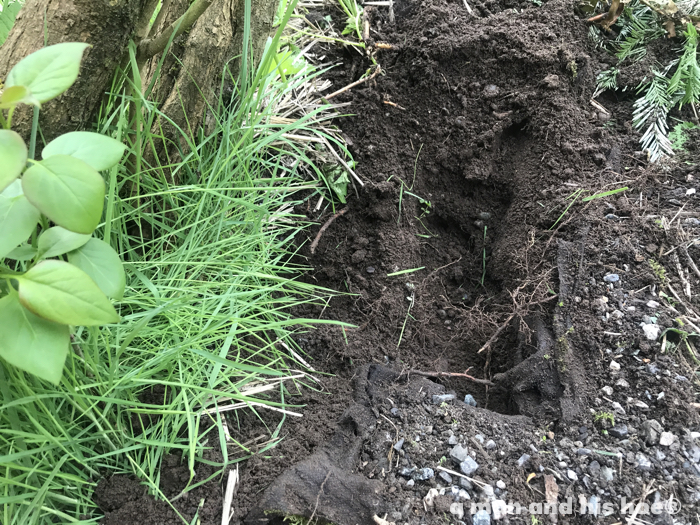
Now that the flower gardens are fenced off from the chickens, when a deep gash appears in a flower bed, my husband can’t blame the chickens anymore. We all know who the culprits are.
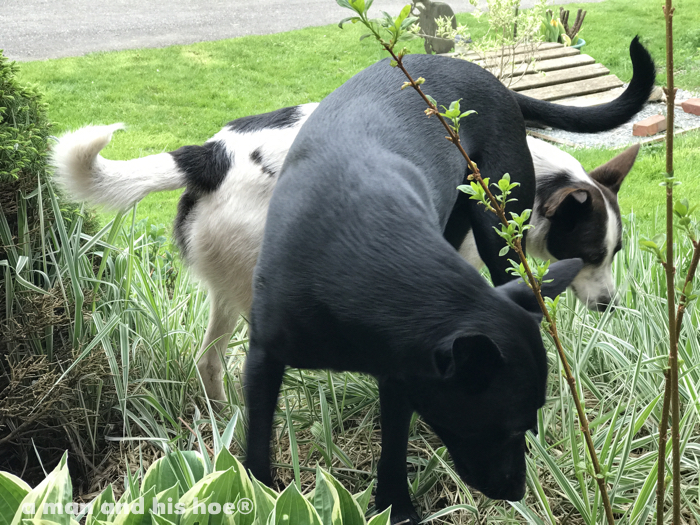
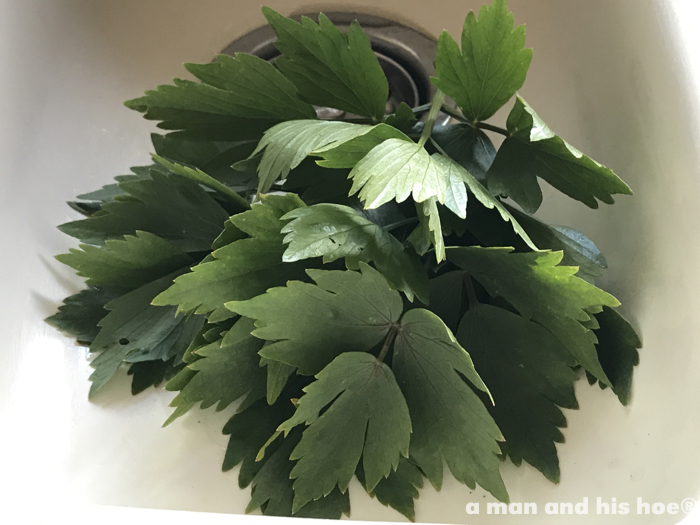
Daily life has a feeling of being back to normal now that there is a steady supple of greens from the gardens. A bunch of lovage for heavenly potato soup. Fava greens, garlic shoots, and kale for a warm curry.
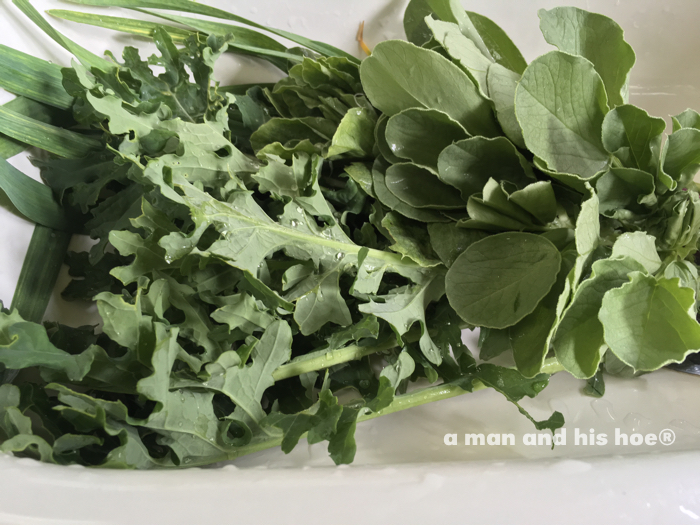
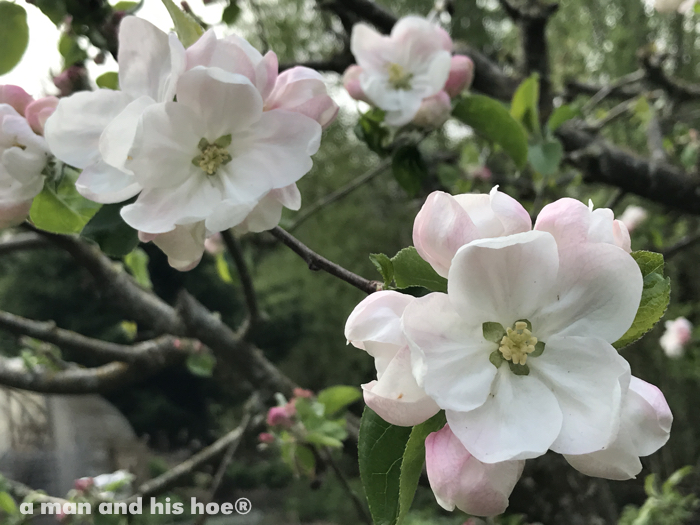
And one of the apple trees is in full bloom. Their big, white flowers brighten up even the rainiest of days.
-
After Earth Day
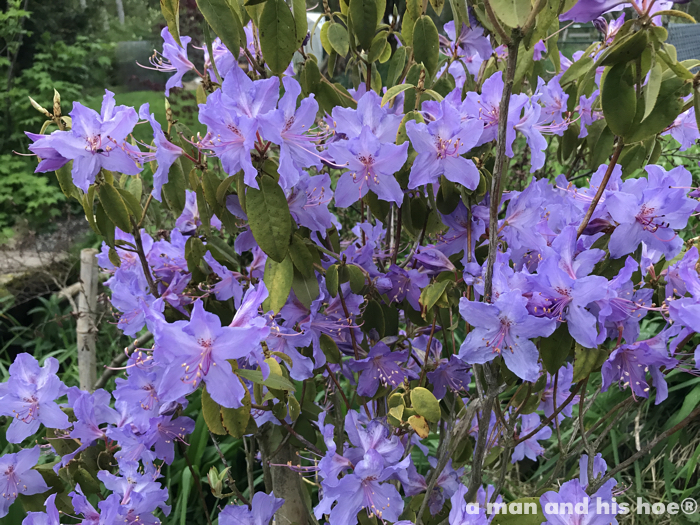
It’s the morning after Earth Day and I am lucky to be able to step out of the house and in a few steps be in the woods. I could live in the city and wake up to look out the window at a wall, and have to walk a long way to get to a little speck of green, and only have time to do so on weekends and days off from a job sitting in a cubicle far from a window with my face glued to a computer screen from dusk to dawn. Instead I get to wake up to the songs of countless birds courting. Surround yourself with green, and the birds will find you.
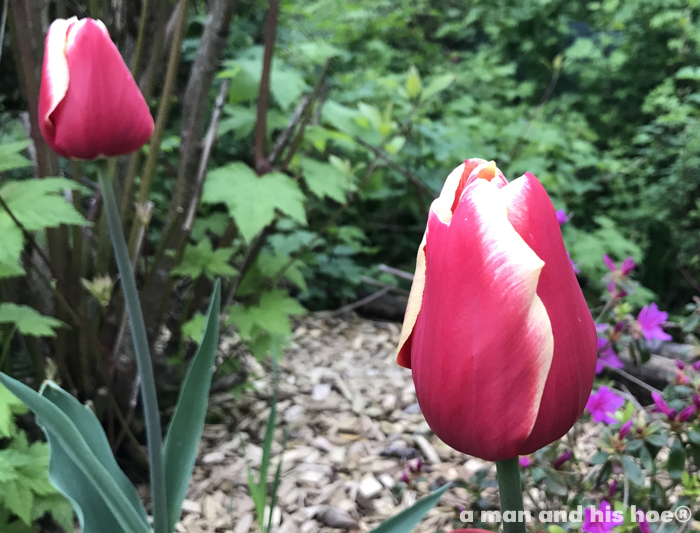
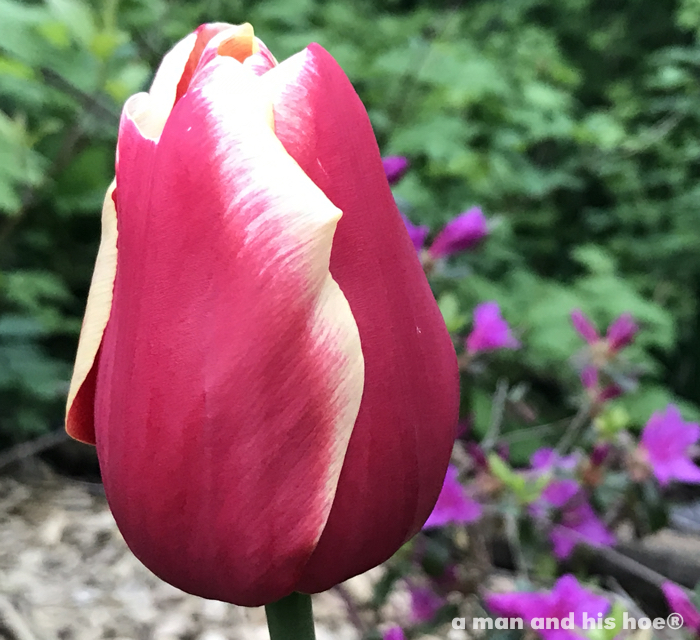
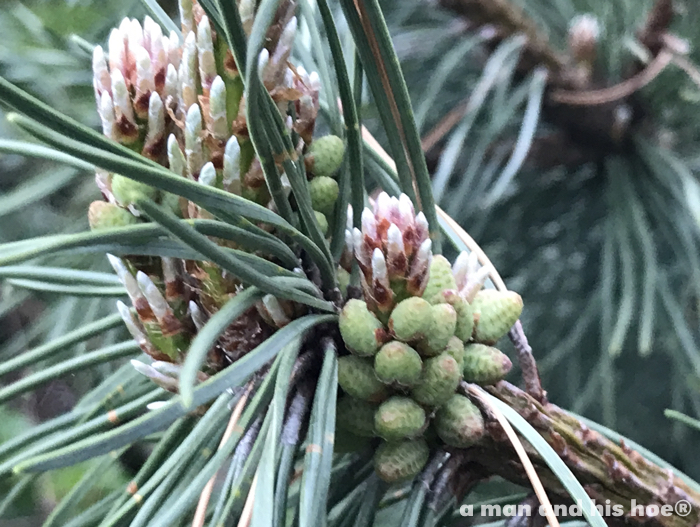
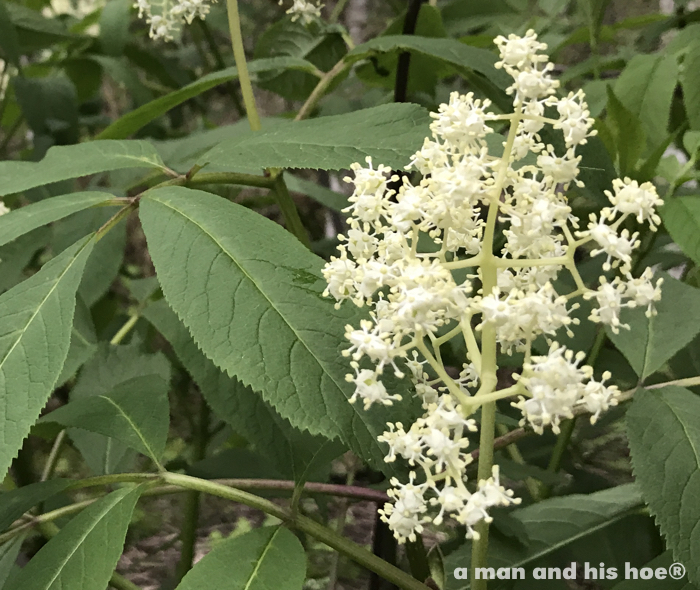
The elderberry have sent up their flower spikes. In a few months, the spikes will be ablaze with red berries which the birds will devour. In the forest, bleeding hearts are in full bloom. The variety that grows here is Dicentra formosa. Reading about it, I read that it was supposedly “discovered” by the Scottish surgeon and naturalist Archibald Menzies who was with Captain George Vancouver on his four and a half year voyage around the world. You read a statement like that and it sounds as if the people living here never noticed this jewel of a plant blooming at their footsteps.
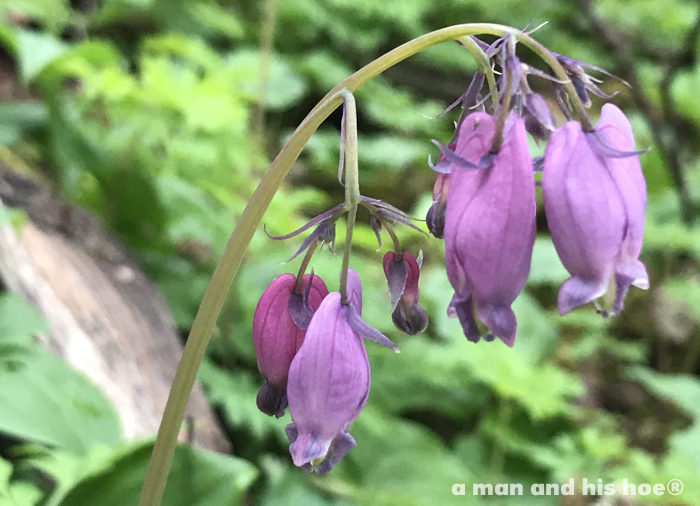
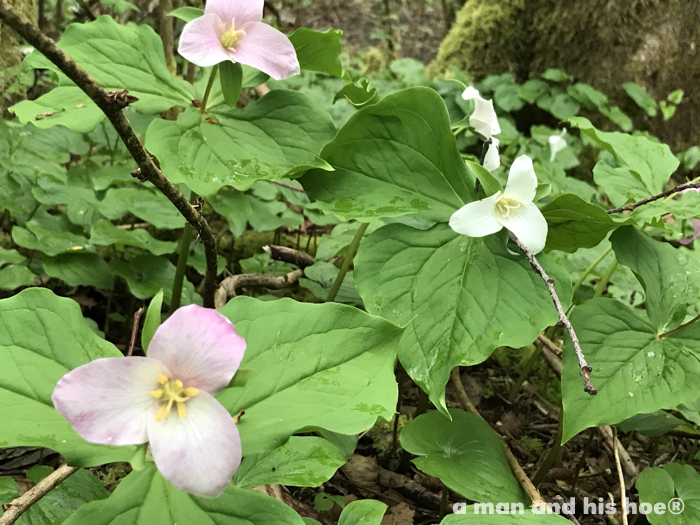
The trilliums are at the height of their bloom too. The forest floor just steps from the house is carpeted with them, so I was surprised to read that in many places it is illegal to pick them as some species are endangered. I have a fond memory of waking up in the morning while camping in the Olympic Mountains to see a fawn nibbling on trillium. Trillium have no true leaves. The three green leaves from which their flowers sprout are actually three large bracts.
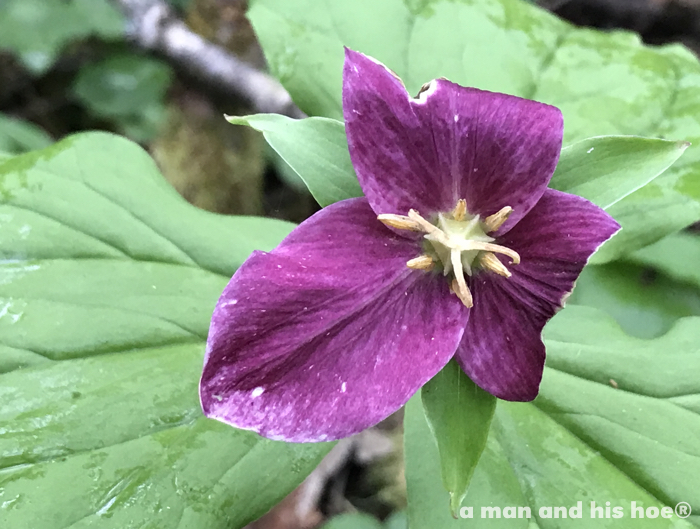
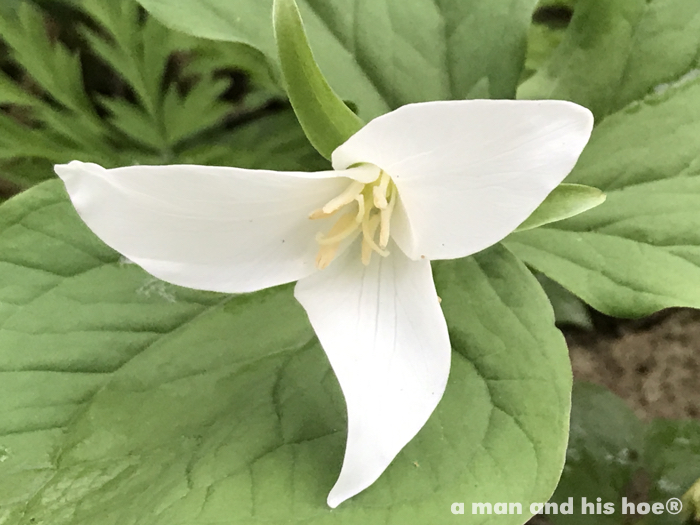
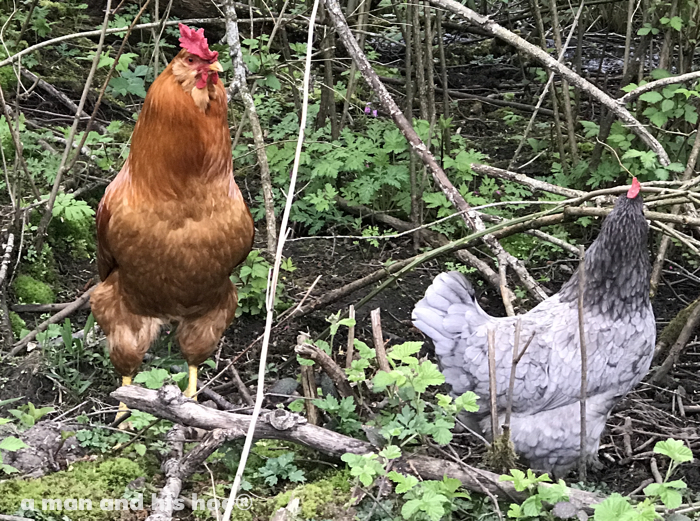
Russell and Kumo-hime 雲姫 are on their way into the forest to feast on bugs and nibble at the bleeding hearts and trillium. Freed from the constraints of the law, they can nibble at trillium without worrying about going to jail.
Months ago, I considered making a bountiful meal out of Russell. As a young rooster, he was a bit of a pest. But I saved him on account of his unusual comb. I’m glad I did. He’s turned out to be the best watch rooster of the tribe. He spots incoming hawks and eagles with a distinctive trumpet call I can hear from a long way off, giving all the other chickens the chance to scurry to safety, and letting me run to shoo the hawks and eagles away. I’ve found that clapping my hands is a very effective way at getting the hawks to fly away.
-
Say, What Grows There?
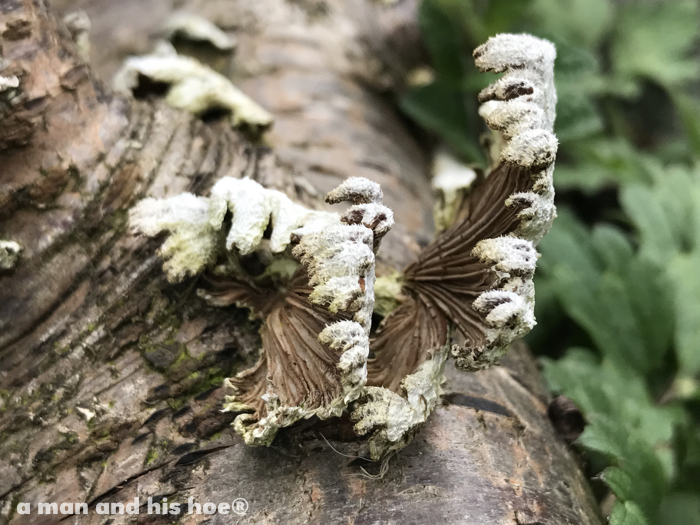
Whoa! Say, what grows there? On a cherry log, waving fronds of some mysterious fungus grow, frosty on one side, leathery on the other. With their curled fingers they entice one to listen to their story. If such fronds could talk, what would they say?
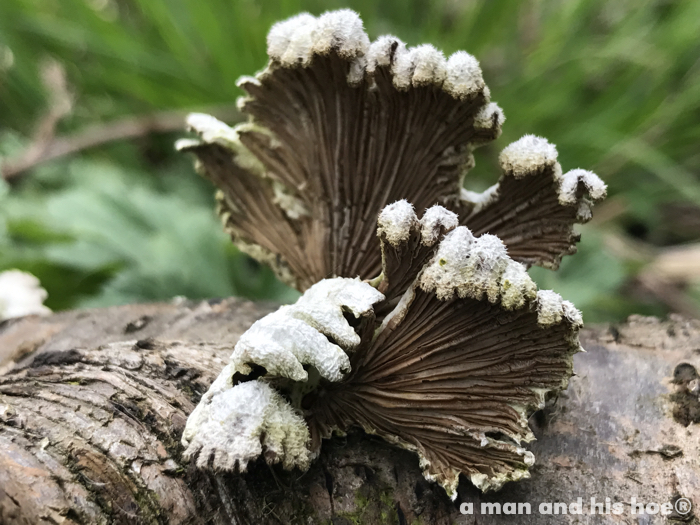
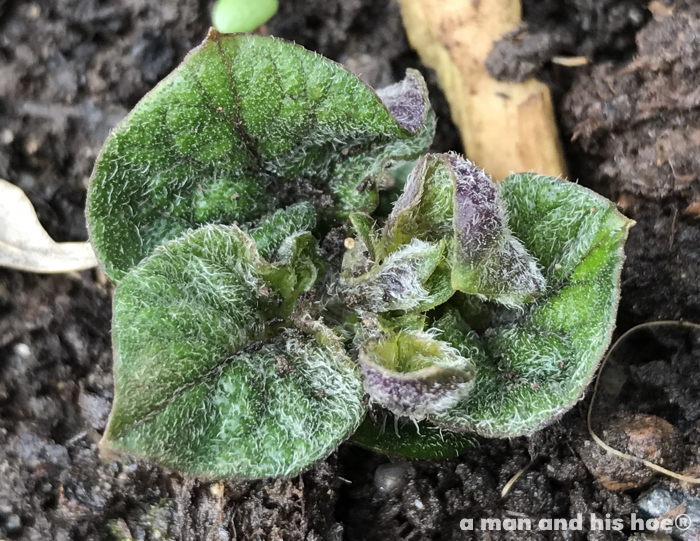
A first potato has sprouted, poked its first leaves out of the ground. I like how potato sprouts are so furry. If I clipped the down of potato sprouts, could I a pillow make? I tried researching the fuzz or down on baby potato leaves, but couldn’t find anything about them. They evidently are not a thing yet.
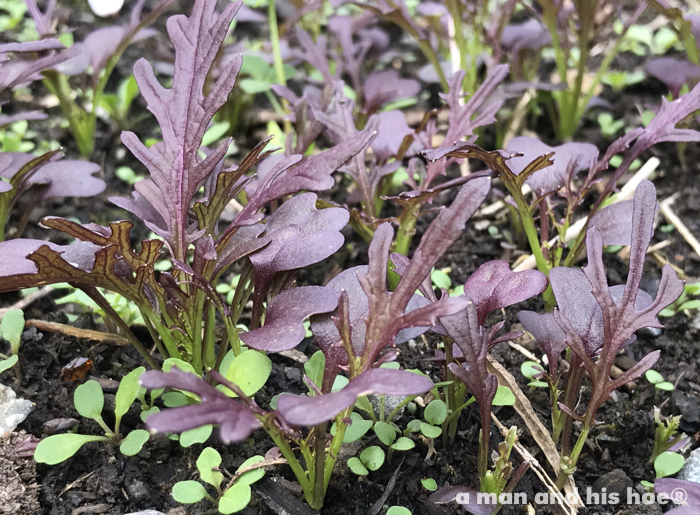
A thing in my book are the delicate sprouts of ruby streaks, a mustard green. They self seed easily, and this bed came up on its own from last summer’s flowers. The ones I thin out make a fiery snack.
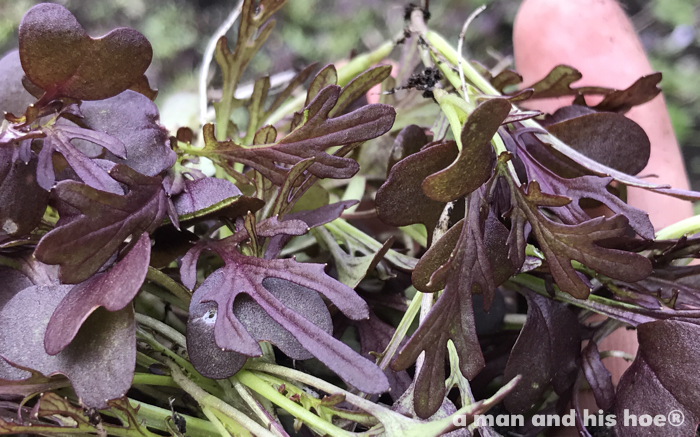
-
Drifts of Petals
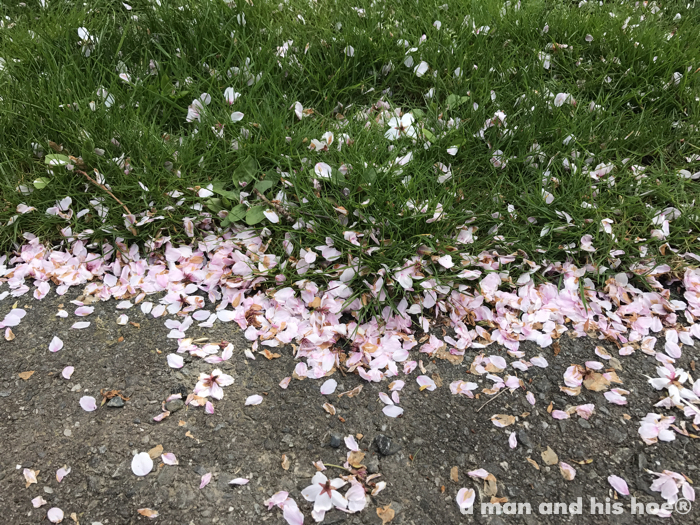
There are more cherry blossoms on the ground than on the tree. From the kitchen window, each puff of wind sends a snow shower of petals through the air. I dream of drifts of petals, knee deep and more. Enough soft petals could bring a city to a full stop, drifts of petals as high as roof tops.
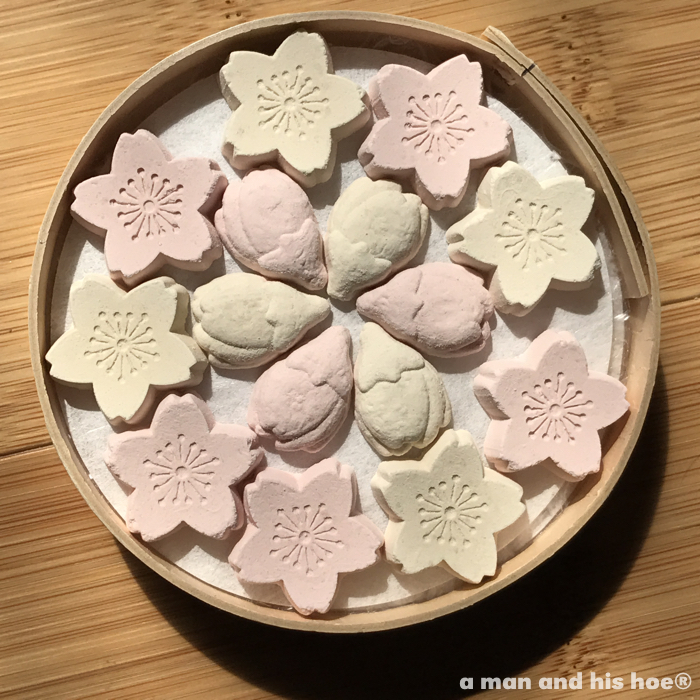
A box of cherry blossom sweets will soon be a memory too.
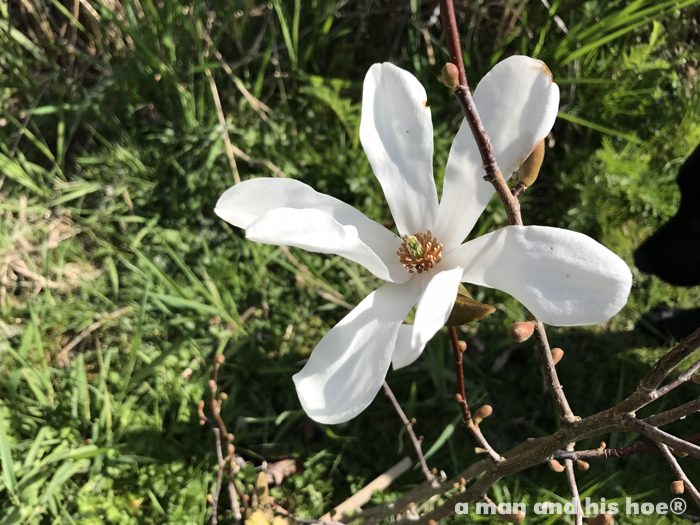
We’ve come home to a kaleidoscope of flowers, magnolia, pear, fruiting cherry, and plum. There must be something magical about the number five, that so many fruiting trees have flowers with five petals.
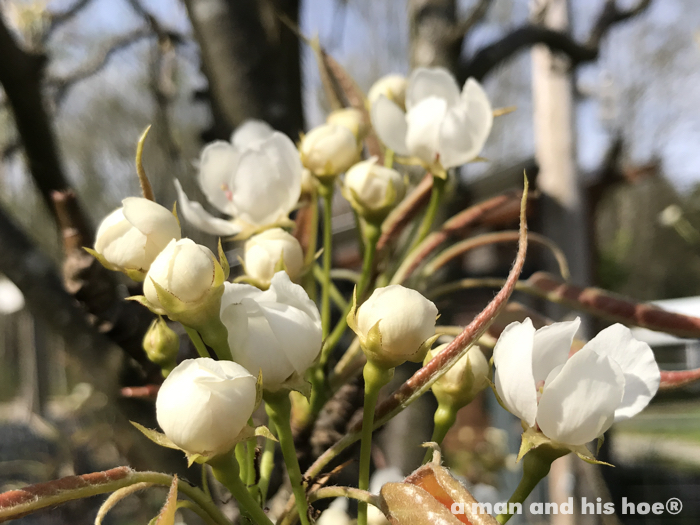
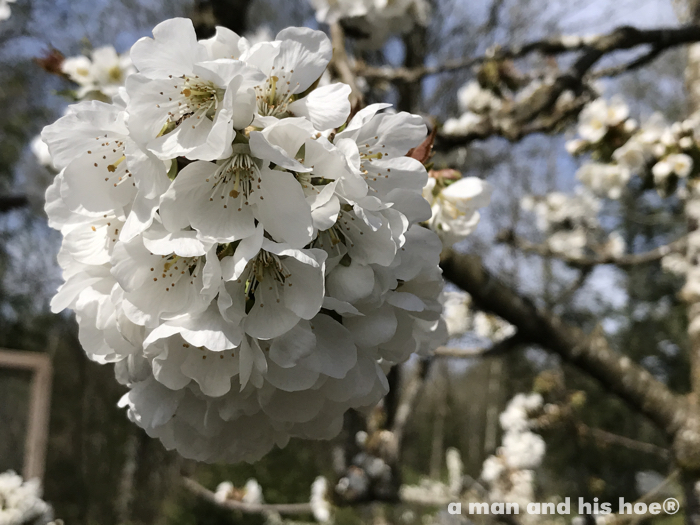
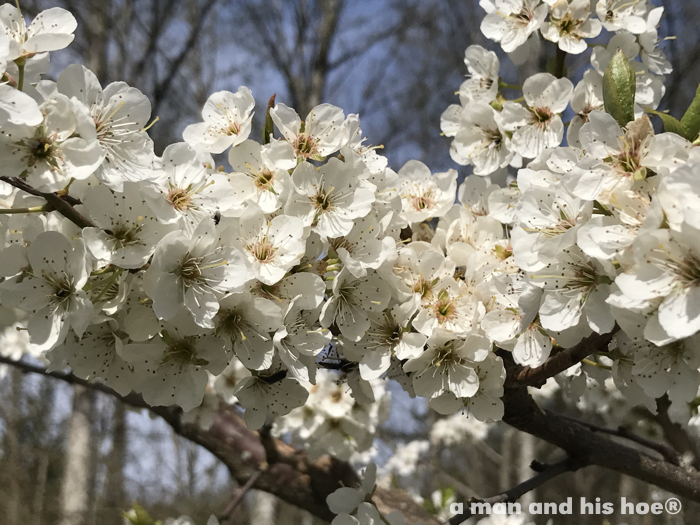
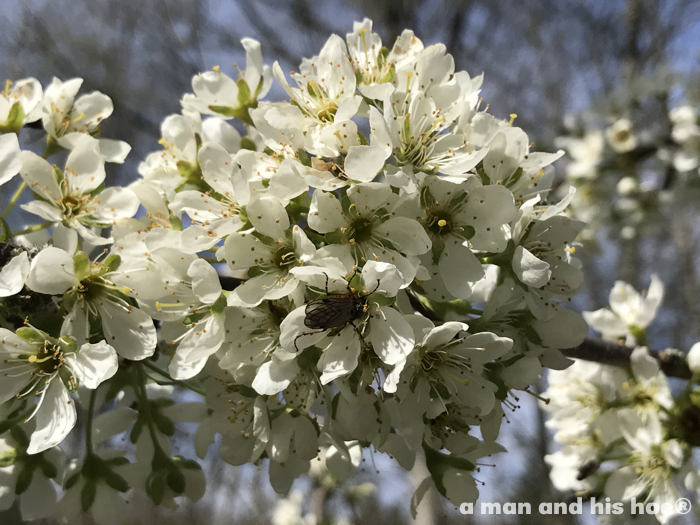
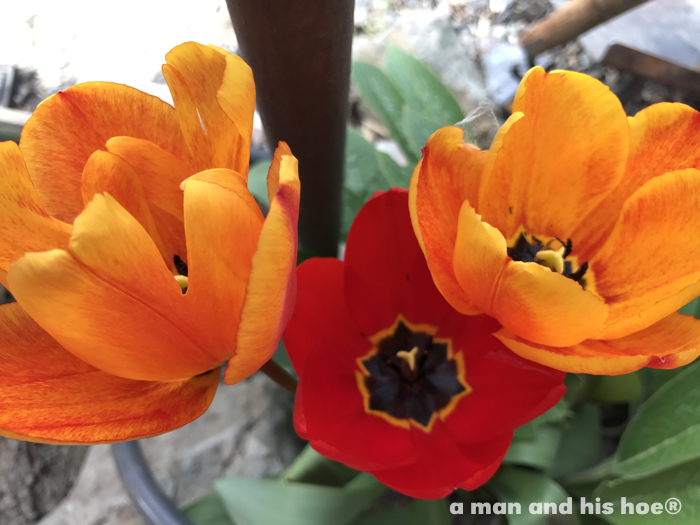
The tulips are opening, the cattails are fluffing, letting their seeds blow away. Some of the fluff will end up lining the nests of birds. Lucky the little bird that wakes up in a warm, downy bed of cattail fluff.
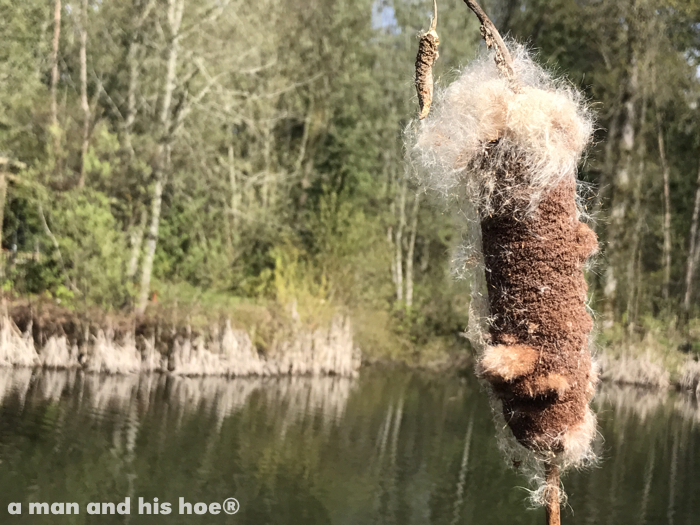
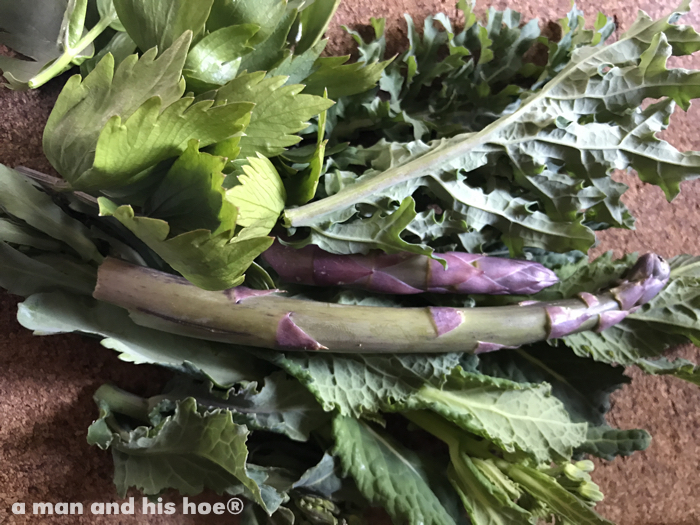
The lovage is up. I picked some yesterday, as are the first asparagus. Winter is but a memory now.